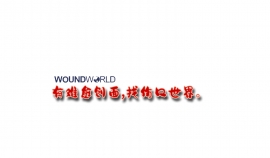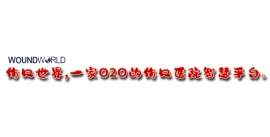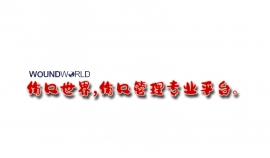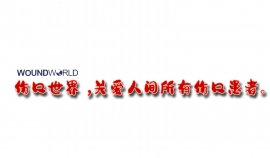文献精选
Zibotentan, a developmental endothelin A receptor antagonist, in combination with dapagliflozin in SGLT2 inhibitor-naïve patients, was effective in reducing albuminuria in people with chronic kidney disease (CKD) already on optimised RAAS blockade in the XENITH-CKD trial published in the Lancet. In this randomised, active-controlled, phase 2b clinical trial, adults with CKD, an eGFR of ≥20 mL/min/1.73 m2 and a uACR of 150–5000 mg/g (approximately 17–565 mg/mmol) were randomised to 12 weeks of treatment with zibotentan 1.5 mg daily (high dose; N=179), zibotentan 0.25 mg (low dose; N=91) or placebo (N=177), all in combination with dapagliflozin 10 mg daily, and in addition to full doses of an ACE inhibitor or ARB if tolerated. At 12 weeks, compared with placebo, there was a significant 33.7% reduction in uACR in the high-dose zibotentan group and a 27% reduction in the low-dose group. Fluid retention had been identified in previous studies of endothelin A antagonists; therefore, weight and B-type natriuretic peptide were monitored during the study and demonstrated fluid retention event rates of 18% with high-dose zibotentan and dapagliflozin, 9% with low-dose zibotentan and dapagliflozin, and 8% with dapagliflozin alone.
Pam Brown GP in Swansea
Citation:
Brown P (2023) Diabetes
Distilled: Reaching a XENITH in cardiorenal protection. Diabetes & Primary Care 25: 199–200
Compared to people newly diagnosed with type 2 diabetes who were well controlled on glucoselowering therapy, those who were not on glucose-lowering therapy were found to have a higher 5-year risk of a first major adverse cardiovascular event (MACE), even if they achieved initial diabetes remission using lifestyle changes, according to this Danish real-world cohort study published in Diabetologia. Lower use of statins and RAAS inhibitors for primary prevention were identified in those not on glucose-lowering drugs but with persisting type 2 diabetes or in remission, and this was hypothesised to contribute to the higher MACE rates. Equalising statin and RAAS inhibitor prescribing to levels achieved in people with well-controlled type 2 diabetes taking glucose-lowering drugs was predicted to result in absolute reductions in first MACE risk. Those with poorly controlled type 2 diabetes taking glucose-lowering drug therapy had a similar standardised absolute 5-year cardiovascular risk to those with persisting type 2 diabetes not on glucose-lowering therapy, despite receiving similar levels of statins and RAAS blockade as the well-controlled group. These findings remind us that people newly diagnosed with type 2 diabetes may already be at significant risk of MACE, and we need to consider the need for statins and RAAS inhibitors to reduce this risk, even if glycaemia can be controlled without medication.
Pam Brown
GP in Swansea
Citation: Brown P (2023) Diabetes Distilled: MACE risk higher in newly diagnosed type 2 diabetes treated with lifestyle alone. Diabetes & Primary Care 25: 201–3
Alana C. Keegan1,2, Sanuja Bose 2 , Katherine M. McDermott 2 ,Midori P. Starks White 2 , David P. Stonko2 , Danielle Jeddah3 , Eilat Lev-Ari 3 , Joanna Rutkowski 2 , Ronald Sherman2 , Christopher J. Abularrage 2 , Elizabeth Selvin 4 and Caitlin W. Hicks 2 *
1 Department of Surgery, Sinai Hospital of Baltimore, Baltimore, MD, United States, 2Division of Vascular Surgery and Endovascular Therapy, Johns Hopkins University, Baltimore, MD, United States, 3Department of Clinical Development, Healthy.io Ltd., Tel Aviv, Israel, 4Department of Epidemiology, Johns Hopkins School of Public Health, Baltimore, MD, United States
Background: Regular clinical assessment is critical to optimize lower extremity wound healing. However, family and work obligations, socioeconomic, transportation, and time barriers often limit patient follow-up. We assessed the feasibility of a novel, patient-centered, remote wound management system (Healthy.io Minuteful for Wound Digital Management System) for the surveillance of lower extremity wounds.
Methods: We enrolled 25 patients from our outpatient multidisciplinary limb preservation clinic with a diabetic foot ulcer, who had undergone revascularization and podiatric interventions prior to enrollment. Patients and their caregivers were instructed on how to use the digital management system and asked to perform one at-home wound scan per week for a total of 8 weeks using a smartphone application. We collected prospective data on patient engagement, smartphone app useability, and patient satisfaction.
Results: Twenty-five patients (mean age 65.5 ± 13.7 years, 60.0% male, 52.0% Black) were enrolled over 3 months. Mean baseline wound area was 18.0 ± 15.2 cm2 , 24.0% of patients were recovering from osteomyelitis, and post-surgical WiFi stage was 1 in 24.0%, 2 in 40.0%, 3 in 28.0%, and 4 in 8.00% of patients. We provided a smartphone to 28.0% of patients who did not have access to one that was compatible with the technology. Wound scans were obtained by patients (40.0%) and caregivers (60.0%). Overall, 179 wound scans were submitted through the app. The mean number of wound scans acquired per patient was 0.72 ± 0.63 per week, for a total mean of 5.80 ± 5.30 scans over the course of 8 weeks. Use of the digital wound management system triggered an early change in wound management for 36.0% of patients. Patient satisfaction was high; 94.0% of patients reported the system was useful.
Conclusion: The Healthy.io Minuteful for Wound Digital Management System is a feasible means of remote wound monitoring for use by patients and/or their caregivers.
KEYWORDS
diabetic foot ulcer (DFU), diabetes, smartphone application (app), telemedicine, technology, smartphone, diabetic foot
OPEN ACCESS
EDITED BY
Zhengyi Tang, Shanghai Jiao Tong University, China
REVIEWED BY
Rasoul Goli,
Urmia University of Medical Sciences, Iran Adam Isaac, Foot and Ankle Specialists of the MidAtlantic (FASMA), LLC, United States
*CORRESPONDENCE
Caitlin W. Hicks 该Email地址已收到反垃圾邮件插件保护。要显示它您需要在浏览器中启用JavaScript。
RECEIVED 02 February 2023
ACCEPTED 09 May 2023
PUBLISHED 24 May 2023
CITATION
Keegan AC, Bose S, McDermott KM, Starks White MP, Stonko DP, Jeddah D, Lev-Ari E, Rutkowski J, Sherman R, Abularrage CJ, Selvin E and Hicks CW (2023) Implementation of a patientcentered remote wound monitoring system for management of diabetic foot ulcers. Front. Endocrinol. 14:1157518. doi: 10.3389/fendo.2023.1157518
COPYRIGHT
© 2023 Keegan, Bose, McDermott, Starks White, Stonko, Jeddah, Lev-Ari, Rutkowski, Sherman, Abularrage, Selvin and Hicks. This is an open-access article distributed under the terms of the Creative Commons Attribution License (CC BY). The use, distribution or reproduction in other forums is permitted, provided the original author(s) and the copyright owner(s) are credited and that the original publication in this journal is cited, in accordance with accepted academic practice. No use, distribution or reproduction is permitted which does not comply with these terms.
The significant glucose-lowering and weight-loss benefits achieved with tirzepatide, the first “twincretin” (long-acting dual GIP/GLP-1 receptor agonist) therapy, could challenge and change current type 2 diabetes management strategies, resulting in tighter glycaemic control and in earlier use of tirzepatide, according to this recently published review by Australian authors. In randomised controlled and open-label studies in the SURPASS clinical programme in people with type 2 diabetes, tirzepatide achieved greater glucose-lowering, weight loss and other metabolic benefits compared with placebo, semaglutide and basal insulins across a broad range of populations, with low rates of hypoglycaemia and with comparable adverse event and safety profiles to GLP-1 receptor agonists. Overall, 43–62% of people treated once weekly with the highest tirzepatide dose (15 mg) achieved normoglycaemia, defined as HbA1c <5.7% (<39 mmol/mol), the lower end of the prediabetes/non-diabetic hyperglycaemia range used in the USA. Up to half achieved normoglycaemia and weight loss of ≥5%, without hypoglycaemia. A separate review brings together the results of the patient-reported outcome measures used in the SURPASS programme studies, exploring the impact of tirzepatide treatment on overall quality of life, ability to perform physical activities of daily living and treatment satisfaction. Significant quality of life benefits were demonstrated with tirzepatide compared to placebo or active comparators.
Pam Brown GP in Swansea
Citation: Brown P (2023) “Twincretin” tirzepatide significantly SURPASSes comparator effects on glucose, weight and quality of life. Diabetes & Primary Care 25: 209–11




